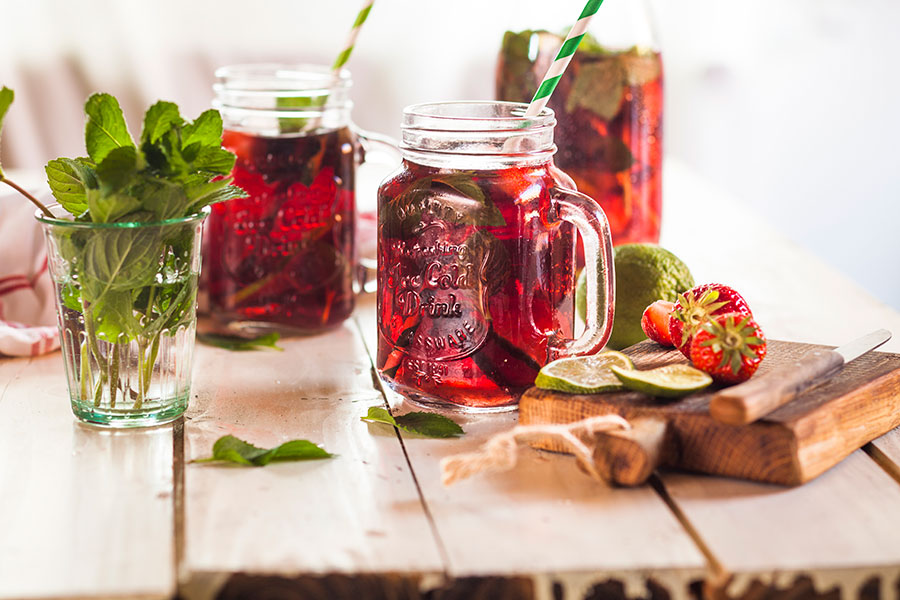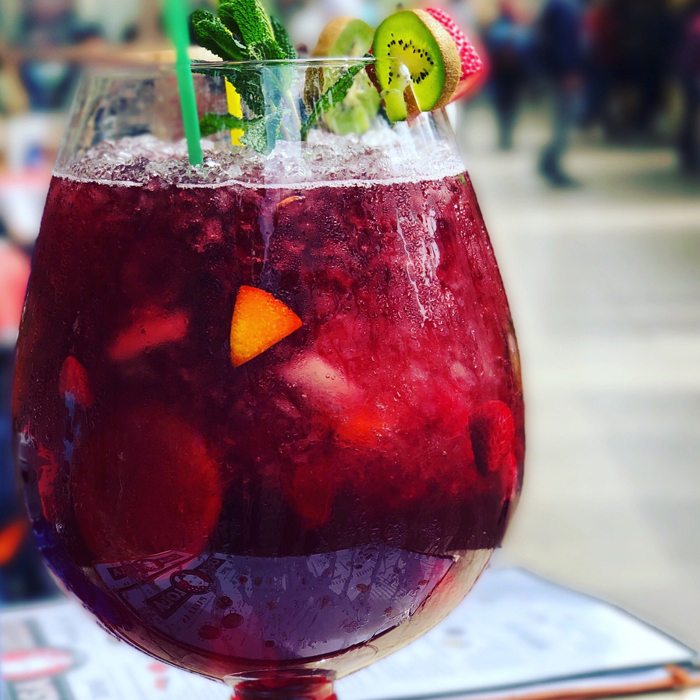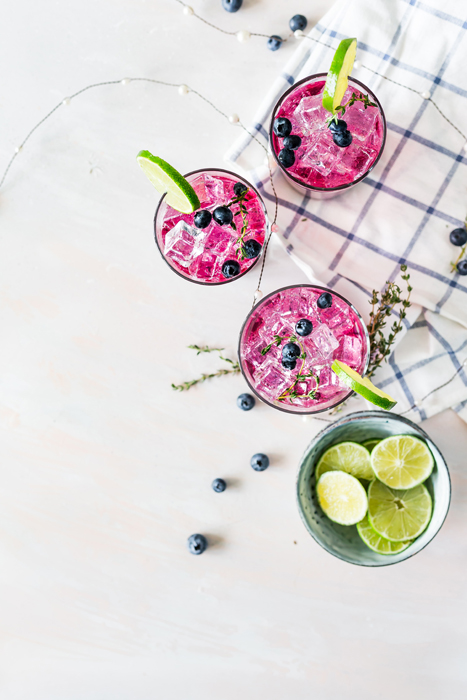Recipes: Healthy Herbal Iced Tea With a Twist

In recognition of Iced Tea Month, we asked an expert about the drink's immune-boosting benefits and asked for few recipes to help us take advantage of them. Photo: Westend61/Getty Images
Summer’s here (finally!), and kicking back, relaxing and sipping on a fresh-brewed glass of immune-boosting iced tea sounds great just about now. But did you know that there are also health benefits as well as sustainable humanitarian halo effects when you choose to take tea?
For this past Iced Tea Month in June we asked an expert about the immune-boosting benefits of enjoying a cuppa — along with a few recipes to help us take advantage of them.
Iced tea has actually been around for more than 100 years, first popularized after the St. Louis World’s Fair in 1904. But even before that, in the early 19th century, there were recipes for spiked tea punch using tea.
The benefits of drinking tea are extensive and have been widely studied, says Shabnam Weber, president of the Tea and Herbal Association of Canada. “Tea is rich in flavonoids, which act as antioxidants. Antioxidants help fight the cell damage our bodies undergo on a regular basis, particularly as we get older.”
Antioxidants are also good for our cardiovascular health, she notes. “Scientific research suggests that drinking black tea in particular, can improve cholesterol levels. And finally, antioxidants have shown to help strengthen our immune system.”
Weber cites studies published by scientists at Harvard and Brigham and Women’s Hospital that found that the theanine in tea, a unique amino acid, may help to prime the immune system in fighting infection.
The United Nations might just be a bunch of teetotallers, as well. The group has adopted a resolution to designate May 21 of every year going forward as International Tea Day. The resolution acknowledges the “… urgent need to raise public awareness of the importance of tea for rural development and sustainable livelihoods and to improve the tea value chain to contribute to the 2030 Agenda for Sustainable Development.”
What we’ve also discovered is that the tea industry provides a livelihood for tens of millions of people across the globe. The number of countries that grow tea range from Darjeeling in the Himalayan mountains of India to Kenyan tea produced in the lush hills of Africa.
According to the Tea and Herbal Association, Canadians consume more tea per capita than the United States, and 8.2 billion cups of the beverage are consumed around the globe every single day.
“I always find myself humbled when I think of this enormous industry I’m a part of,” says Weber. “We are all simply stewards of this tea plant, taking care of it for the next generation …[and] to share that message not only with Canadians but beyond to the many millions of people around the world who are responsible for making our cup of tea possible.”
So, the next time you brew up a cup of tea know you’re doing both you and the world a bit of good. And to get you started on that, see below for a few tips on making the best iced tea at home as well as recipes that include added ingredients to help give your drink a better-for-you boost.
Okay, we’ve also added a tea “cocktail” because, why not? Ice, ice, baby.
Tea Tips
Want a better brew? Take these Iced-tea brewing tips from Shabnam Weber, president of the Tea and Herbal Association of Canada.
- Sweeten your tea with white or brown sugar, simple syrup, honey.
- Garnish your tea with citrus or mint or fruits.
- Brew tea and dilute it with fruit juice (or lemonade) and chill it.
- Make ice cubes out of your tea to help keep it cold when serving without diluting.
Hot Brew Method
- Make a hot brew to boil your tea and chill it.
- 2 grams of tea (loose leaf) per 6 to 8 oz of fluid and steep to the instructions of the tea.
- With a tea bag, use one bag per 6 to 8 oz of hot or boiling water.
- If you like sweet tea, sweeten it before you put it in the fridge to cool.
Cold Brew Method
- Cold brew is brewing tea in cold water.
- 2 tsp of loose leaf tea for each 6 to 8 oz or 3 to 4 tea bags per litre of water.
- Let sit for 30 minutes and put in the fridge overnight. Come back to it the next day!
Recipes
(courtesy of the Tea and Herbal Association of Canada)
Berries and black tea provide a one-two punch of brain power and antioxidant, immune-boosting benefits.
Ingredients
6 bags berry-based herbal tea (or try 6 tsp loose black tea to up the health factor)
1-1/2 cups frozen or fresh mixed berries
8 cups boiling water
Lime slices (for garnish)
Directions
1. Bring fresh water to a boil.
2. Place tea into a large pitcher.
3. Pour boiled water over tea bags and stir. Let steep for 8 minutes.
4. Remove tea bags.
5. Add berries to pitcher and stir.
6. Let the mixture cool to room temperature (approximately 2 hours).
7. After the mixture has cooled, stir.
8. Fill glasses with ice and pour cooled iced tea into glasses.
9. Store remaining iced tea in the fridge.

Herbal Iced-Tea Sangria
Vitamin C-rich citrus and strawberries, along with just a hint of red wine’s resveratrol, give this drink an extra health advantage.
Ingredients
2 herbal tea bags (something fruity)
3 cups boiling water
1 orange, peeled and pith removed
4 strawberries, quartered
2 cups red wine
2-3 tbsp rum or brandy (optional)
2-3 tbsp granulated sugar
Directions
1. Add tea bags to boiling water. Steep for 3 minutes.
2. Remove bags, then refrigerate tea.
3. Chop orange into small pieces, then combine with berries and wine in a large pitcher.
4. Refrigerate until the tea is chilled, then stir in tea and rum (if using).
5. Taste and add sugar, if needed.
RELATED:
Teatime: Royally-Inspired Dessert Recipes
Elegant Cocktails When It’s Time for Tea But Not Teetotalling
